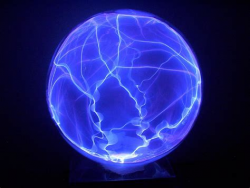What is plasma? It is one of the four fundamental states of matter. It is one of the few fundamental states of matter that contains a significant amount of charged particles, such as electrons and ions. This fact sets it apart from the other states of matter. What is plasma? Let’s find out. Among other things, plasma is used in many industrial processes. It also has the ability to bend light, and is useful in creating laser beams!

It is an amazing substance that is created when matter gets superheated so that the electrons are literally torn away from the atoms into an ionised gas. Examples of plasma in space can be seen in the stars and our sun. Find out more about the use of the Thermal Plasma Spray at a site like https://www.poeton.co.uk/advanced-treatments/apticote-800-thermal-plasma-spray/
Plasma is a gas with a small space charge, containing both ions and electrons. It can be ionised or not. Examples of partially ionised plasmas are neon signs and lightning like you see in city centres across the world. Despite this difference in definition, plasma can be used in a wide range of applications, from computer chips to rocket propulsion. They can even be used in the environment for cleaning, disinfecting, or even healing wounds.
The first scientific study of plasma took place in the 1920s, and was led by Irving Langmuir. It is a collection of negatively and positively charged particles. These particles interact by way of electric fields. The presence of free charges in plasma causes the interaction between them. Ultimately, this results in a gas called a “plasma” which in turn creates something called a ‘plasma cloud’.

While the exact boundary is difficult to define, the transition from a charged state to a non-ionized state depends on the context. For example, in a meteor shower, the electrons and ions have a small space charge. The difference between ionised and neutral particles in a gas is the distance between them.
In the universe, plasma is one of the four fundamental states of matter. Its existence is the key to understanding how the sun’s magnetic field affects the Earth’s atmosphere. The phenomenon is referred to as a greenhouse effect. In this case, the temperature of the earth is heated, but it is not hot enough to cause the radiation to travel from the planet. If the temperature rises, then the particles are in a different state, but they are still present.
In physics, plasma is a form of matter that can behave in ways that are impossible to imagine in any other form which is what makes it unique. For example, in a solar storm, a dusty plasma can be formed. In the same way, in an ionised gas, a neutron beam can create a different kind of atmosphere. A particle with a positive charge is a neutral ion. When it is in a gas, the particle is ionised.
